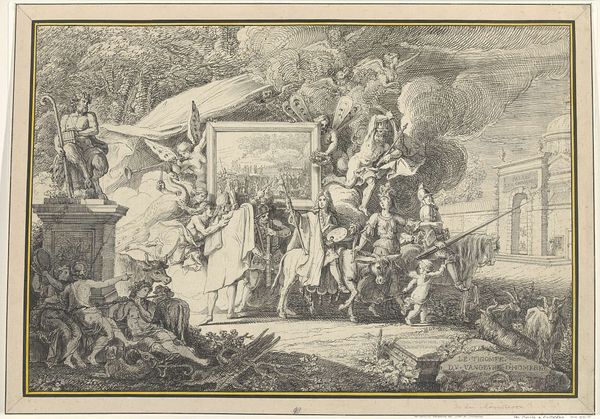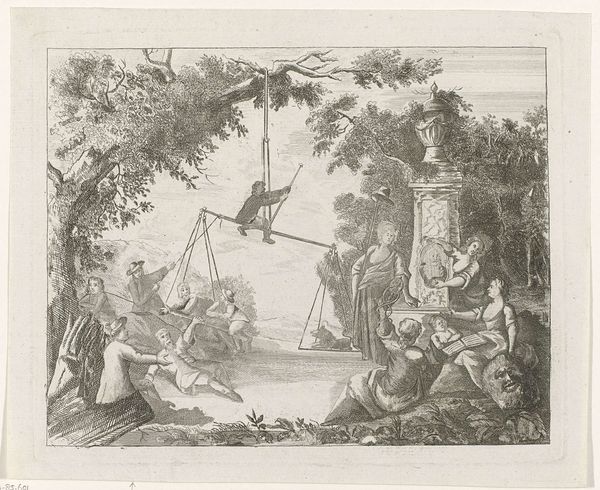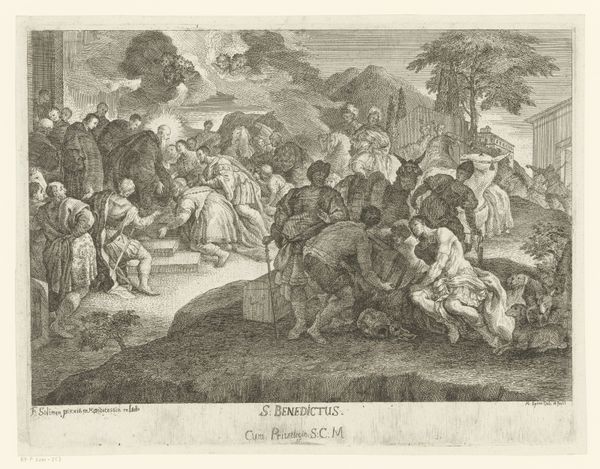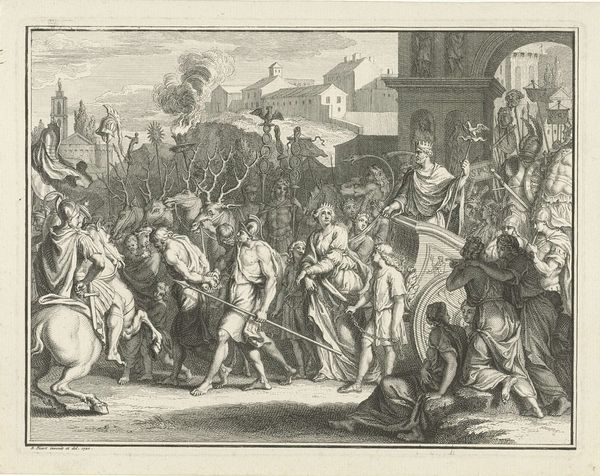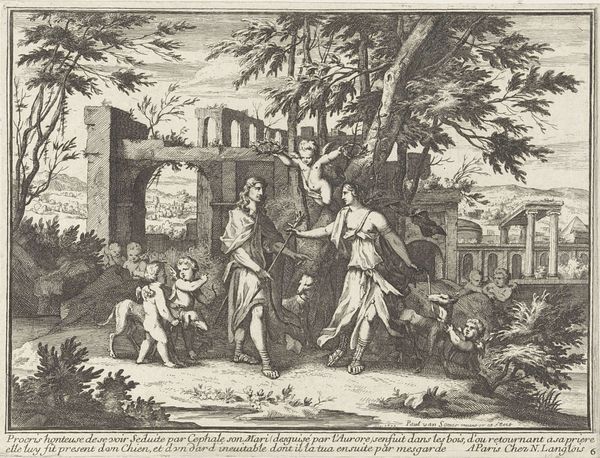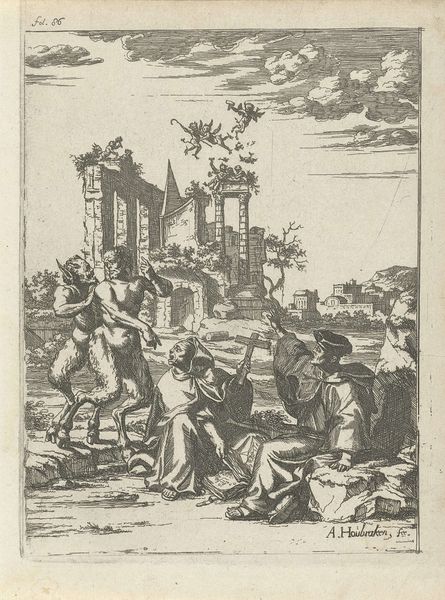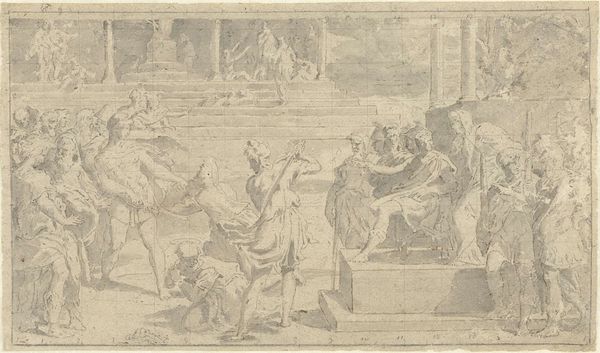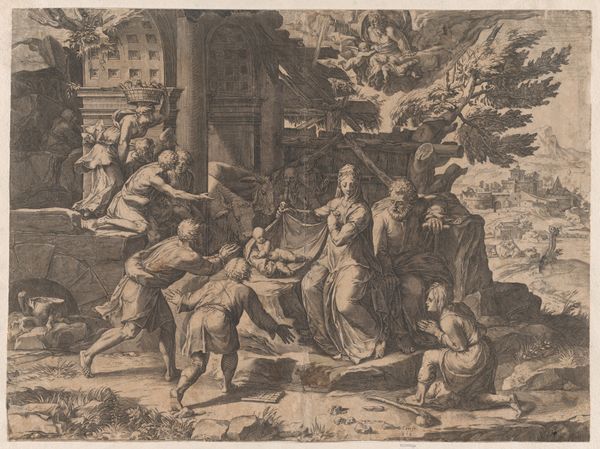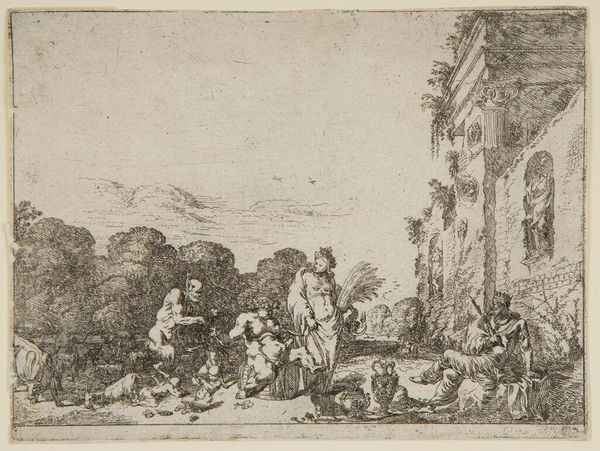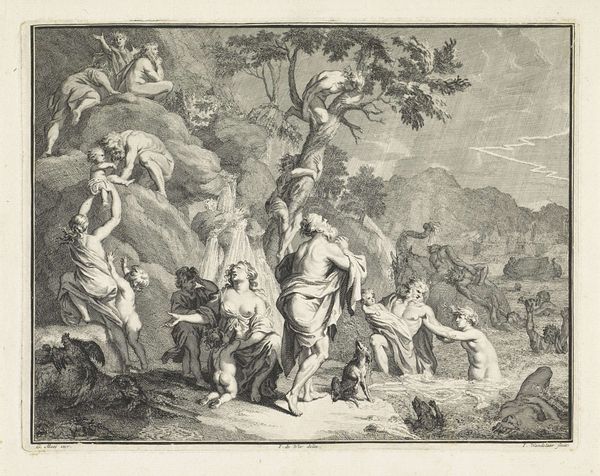
print, engraving
#
ink drawing
#
baroque
# print
#
figuration
#
history-painting
#
engraving
Dimensions: height 280 mm, width 366 mm
Copyright: Rijks Museum: Open Domain
Curator: Here we have “Baptism of Christ”, an engraving by Johannes Glauber dating back to sometime between 1656 and 1726. Editor: What strikes me immediately is the dynamism and asymmetry. Despite being an ostensibly sacred subject, it feels so alive, not static at all! Curator: Indeed. Notice the engraver's expert use of line. Dense crosshatching plunges the gathering of onlookers on the left into near darkness, contrasting with the airy lightness of the angels on the right. It’s a masterclass in tonal variation using solely line work. Editor: That darkness on the left, though, for me speaks to the broader cultural implications. We have a predominantly male gaze represented by this crowd, rendered in a stark, almost critical light. The composition itself seems to suggest a societal skepticism towards Christ’s act, shadowed against a divine moment of grace, highlighted by the angels. Curator: An interesting perspective. However, might we also consider how Glauber manipulates perspectival depth to create dramatic spatial relationships? The strategic placement of the architectural ruins further compresses space, enhancing the almost theatrical quality. Editor: True, and that compression lends urgency. It reminds me how baptism itself was often a highly politicized act during periods of religious and social upheaval. What appears as a serene, spiritual event is loaded with implications of resistance and solidarity. It brings forward narratives often whitewashed from traditional historical depictions of religious rites. Curator: A compelling point. Certainly, reading artwork through social contexts enriches understanding. But I maintain that its artistic power lies fundamentally in Glauber's superb manipulation of Baroque sensibilities and expert deployment of printmaking techniques to tell this familiar story. Editor: Of course. It's in that skillful melding of technique and representation that the potency lies. Considering both formal choices and their reflections on social issues leads us to richer conversations, highlighting art's persistent engagement with the world.
Comments
No comments
Be the first to comment and join the conversation on the ultimate creative platform.
